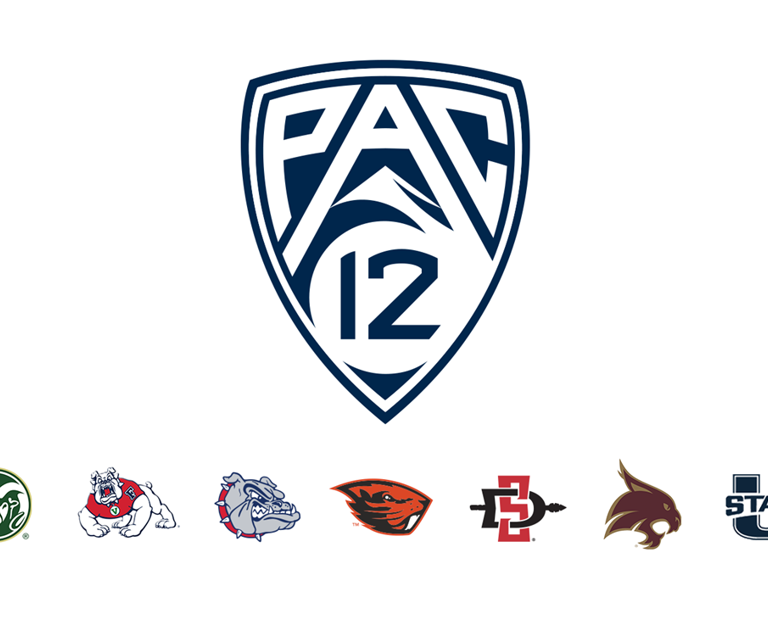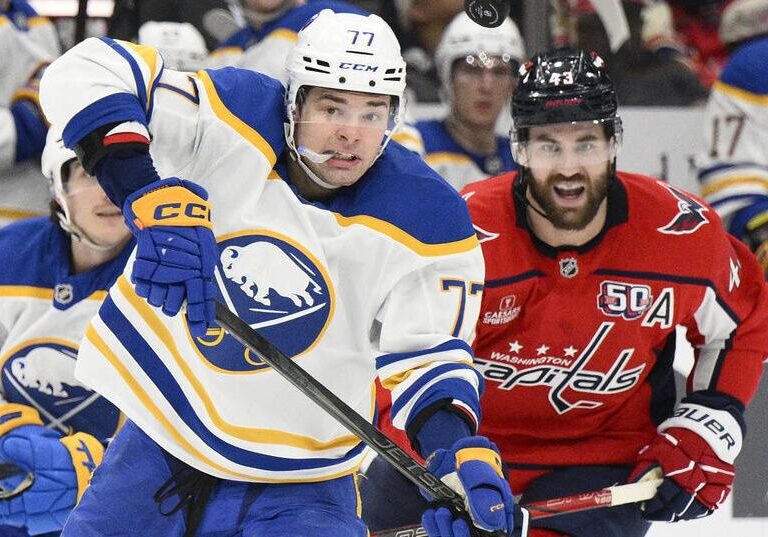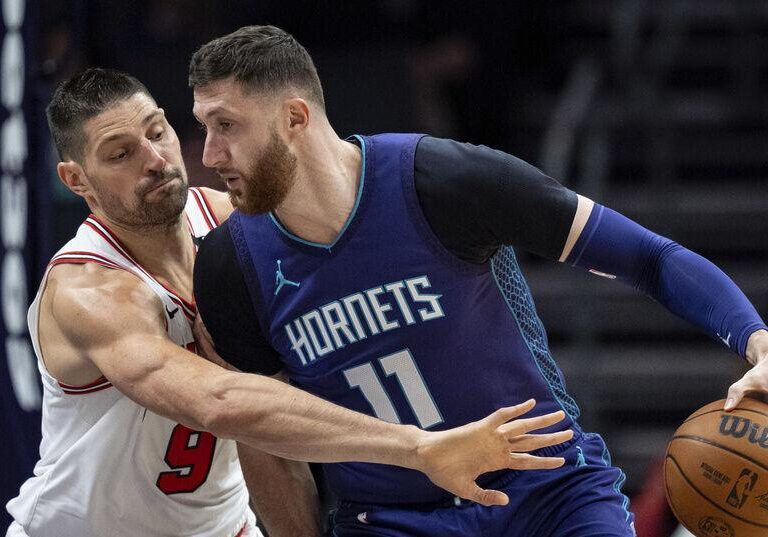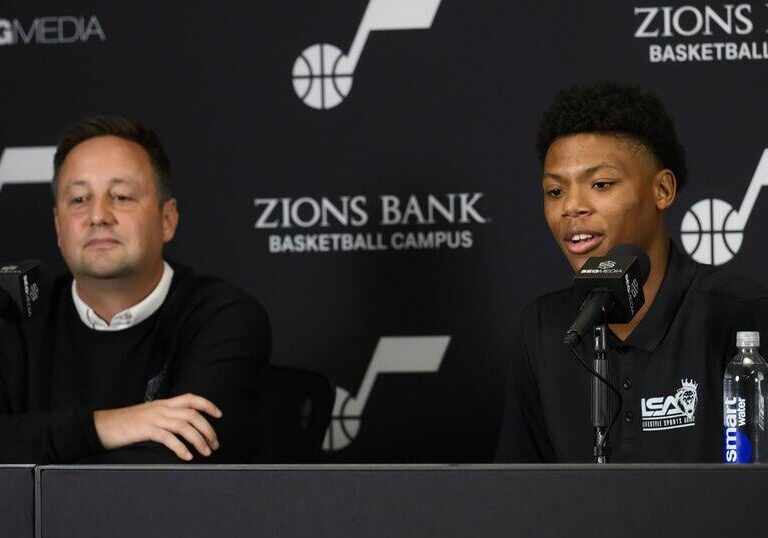The transition for Mountain West Watch from football season back to basketball season (where this series started last year) is here. I’ve been hesitant to put both basketball and football into the same article, but we’re going to do that for one week right now. The final football power rankings, with a bit of a season summary, along with the opening of the basketball power rankings and a look at the standings as conference play has just opened up.
There’s a lot to get to here, nearly 3,000 words, and it took me an extra two days to get this out. So let’s get started.
Walker’s Final Mountain West Football Power Rankings
1. Boise State (12-1, 7-0)
Not much left to say. This is a golden season for Boise State, a return to the dominance of the 2000s and 2010s. The early 2020s had been a bit of a hiccup, with a rare 7-5 season in 2021 and then starting the 2023 season 5-5. Well, since Spencer Danielson took over, the Broncos are 15-2 with zero losses against Group of Five teams. And it’s fitting that one of the original BCS busters is also the first the first G5 team in the playoff. Much like Cincinnati’s foray into the four-team playoff a few years back, this will be a watershed moment for G5 schools.
2. UNLV (10-3, 6-1)
The Rebels ultimately got what they wanted much of the season, a chance at a rematch with Boise State in the conference title game for what would have been a long-shot at the college football playoff. Would they have gotten it? Hard to say with Army being ranked and very much in the mix had the Broncos lost. Alas, UNLV couldn’t overcome the Mountain West juggernaut but did come away with their first 10-win season since 1984 and a final CFP Poll ranking inside the top 25.
Unfortunately, the season will have one last sour taste to it as head coach Barry Odom is heading out the door to take the Purdue job. Much like another team later down this list, the loss of the head coach throws the upward trajectory of the program into the wind. No one knows if the Rebels will stay in the 8-10 win per year range or will go back to the 4-5 win range that has dominated the 21st century for this program.
3. Fresno State (6-6, 4-3)
Fresno State may get the award for most up-and-down season in the Mountain West. From being a conference contender, to a pretender, to getting one last spiteful shot at Colorado State to ruin the Rams’ hopes at a conference title game appearance. The win over the Rams is also pretty much the sole reason they get the third spot here instead of being down at four.
This season will ultimately be considered a bit of a write-off. Jeff Tedford stepped down in mid-July, throwing the team into disarray and even then a bowl game was still in store. With Matt Entz taking over, there can be more direction. After all, the Bulldogs had 29 wins from 2021 to 2023, which is a lot of positive momentum that won’t be entirely crushed by the 6-6 downturn this year.
4. Colorado State (8-4, 6-1)
No one really took the Rams seriously despite starting league play 5-0 and perhaps there was a reason for that. When it came down to the most important games, Colorado State arguably played its worst. It lost to Fresno State, a team that lost two straight games to Hawaii and Air Force. Then the Rams nearly blew the season finale against Utah State, narrowly pulling victory out of the jaws of defeat. Those two games were the ones that would directly determine whether Colorado State would get to play in the Mountain West title game and both were really poor showings. Perhaps the Rams would have been blown out by the Broncos, but the fact CSU couldn’t at least get there was a bit of a disappointment for those rooting for the underdog and the overlooked.
5. San Jose State (7-5, 3-4)
The Spartans got to play pretender for the first part of the season but were ultimately exposed. But San Jose State has every reason for optimism within the program. Despite losing their head coach, Brent Brennan, last offseason, it appears the improvement of the team is here to stay. For the first time since the 1980s, SJSU has won at least seven games in three consecutive season. And they’ve won at least seven in four of the last five seasons (one of those being the 7-1 season that won the Mountain West championship).
There’s a ways to go to the top, and this year showcased that, but the Spartans are much closer than they used to be in terms of being a consistent threat.
6. Hawaii (5-7, 3-4)
Picking this sixth team was probably the most splitting-hairs moment of the whole exercise. Three 5-7 teams all with notable flaws but successes that deserve some recognition. In the end, Hawaii comes out as the most consistent (relative to the others) and have a head-to-head win over one of the others.
I’d have to call this a pretty disappointing season. Going into year three of the Timmy Chang tenure and there was expectations of improvement. The Warriors went from 3-10 to 5-8 so getting to a bowl for the first time since 2020 was anticipated. Brayden Schager was coming off a 3,500-yard passing season with a real shot at being just as productive. And yet, that didn’t happen. He threw 1,000 fewer yards, seven fewer TDs and only one less INT while also seeing his completion percentage drop by nearly five. The run game didn’t help and the defense was only marginally better than normal.
7. New Mexico (5-7, 3-4)
Most of the positive things one could say about the Lobos gets washed away in the wake of Bronco Mendenhall leaving. New Mexico had begun to perhaps lay a foundation to join teams like SJSU and UNLV in improving what has been a longtime disappointing program. Instead, it’s all up in the air. A mass exodus in the transfer portal and the coaching staff means the Lobos are starting just about from square one.
8. Utah State (4-8, 3-4)
This season is one Aggie fans are hoping will be lost to time. A small blip on the radar of an otherwise healthy football program that has now only missed a bowl game three times since 2011. Those hopes lay in the arms of the man who crushed the hopes of the Lobos, Bronco Mendenhall. He’ll be tasked with building up the Aggies on and off the field as they look to secure their third appearance in the Mountain West title game, as well as get the Department of Justice off their back.
9. Air Force (5-7, 3-4)
A few weeks ago and the Falcons would have been a shoe-in for dead last in the Mountain West. But they managed to basically pull a reverse 2023. In 2023 they started 8-0 and then lose four of their last five games. This year, Air Force began the year 1-7 but won their last four games. Sure, two of those wins were against Nevada and San Diego State, but wins over Fresno State and Oregon State were the kinds of games they weren’t even close in the first half of the season. Troy Calhoun appears to still have it and may turn things around for a return-to-form 2025.
10. San Diego State (3-9, 2-5)
Sometimes great coaches step into a struggling program and then themselves struggle in year one before turning things around down the road. San Diego State better hope that’s the case with Sean Lewis because this year was not what was billed. In some fairness, Lewis had a 2-10 season at Kent State before going 7-6 in 2019 and having an overall record of 22-21 between 2019 and 2022 with the team (quite the achievement since the Golden Flashes are 1-23 since Lewis left the program). So there’s time. But suffice to say this year didn’t leave any Aztec fans wanting more.
11. Wyoming (3-9, 2-5)
Jay Sawvel was yet another first-year head coach who struggled to find consistent success. He took over a program that was used to having a winning season at minimum under Craig Bohl. The hope was for Bohl’s hand-picked successor to take the Cowboys to the next level, win a championship instead of yet another seven or eight-win season. Putting it mildly, that didn’t happen. The physically imposing defenses under Bohl didn’t do much imposing under Sawvel, and the often underwhelming offenses Bohl had were just ad this past year. Like with Lewis, there’s plenty of reason to give Sawvel some space and let him go to work. But like for any coach that goes 3-9, the seat is a few degrees warmer no matter how much slack you might give them.
12. Nevada
I don’t know if I could find a more frustrating season for any program in college football. You’ve got your bad teams, but the Wolf Pack were so close in so many games that it’s almost crazy they managed to go winless in conference play. They were within a touchdown of two different teams – Boise State and SMU – that were just selected to compete in the College Football Playoff. Six of their total losses were by one score or less.
It’s time for a full-on look at the Mountain West in basketball, standings, key storylines, top performers so far and so on. Last year brought a ton of excitement, drama and excellence. This year it’s been a bit of a struggle for most teams to live up to what they did last year. Let’s start with the standings as they sit now.
Mountain West Men’s Basketball Standings (Dec. 12)
| Team | Overall Record | Conf Record |
|---|---|---|
| Utah State | 9-0 | 1-0 |
| San Diego State | 7-2 | 1-0 |
| New Mexico | 7-3 | 1-0 |
| Nevada | 7-3 | 0-0 |
| Boise State | 6-3 | 0-0 |
| Colorado State | 5-4 | 0-0 |
| UNLV | 4-4 | 0-0 |
| Air Force | 3-7 | 0-0 |
| Wyoming | 5-4 | 0-1 |
| San Jose State | 5-6 | 0-1 |
| Fresno State | 3-7 | 0-1 |
Alongside standings and much like last year, I’ll be putting together a weekly summary of the average ranks for all Mountain West teams. There will be a bit of a difference since the number of rankings included will be down from last year when there were about 10. This year the rankings will be limited to those that appear on the Team Sheets that are eventually put in front of the Selection Committee. Those metrics being the NET, KenPom, ESPN BPI, KPI, T-Rank, Strength of Record and Wins Above Bubble.
This is the snapshot I took from earlier this week.

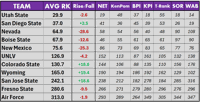
It showcased the struggles from pretty much the entire top half of the conference as only San Diego State saw a bump in average ranking. The Aggies remain undefeated, but narrowly defeating Wyoming at home didn’t do much to impress most people (the 30-point win over Utah Tech did help cover some of the damage). Nevada, Boise State and New Mexico all had losses that dropped them, with the Wolf Pack and Lobos taking the hardest hit as their losses were particularly surprising.
Top Performers
We’ll take this as a preview of what may be coming for an All-Mountain West team. Last year’s edition of this series had a weekly “Award Ladder” but that’s going to be more periodic this time around. Let’s just start with the top stars from the top teams and go from there. Also, the order is going to be alphabetic by last name, so don’t get worried about what order these guys are in.
Player of the Year candidates
Ian Martinez — 18.4 points, 3.3 rebounds, 3.3 assists, 1.1 steals, 0.7 blocks
Currently the leader in points per game of the Mountain West by a mere 0.04 points, Martinez is having the breakout campaign the Aggies were both expecting and hoping for. Last year, he was the number two behind Great Osobor and averaged 13.3, but now that he’s in a bigger role, Martinez has spread his wings as a scorer and playmaker. He’s obviously at a career-high in points, helped along by a career-best 43.1 percentage on 3-pointers, but he’s also averaging 3.3 assists, nearly double his pervious career high. With the Aggies at the top of the standings, he’s a clear candidate given how much value the voters put on the whole “best player on the best team” argument.
Donovan Dent — 18.4 points, 7.5 assists, 2.1 rebounds, 1.2 steals, 0.9 blocks
Myself and many others saw this kind of explosion from Dent coming. Yes, Jamal Mashburn and Jaelen House were great players, but Dent is just on another level right now and was held back in sharing the load with those guys in the backcourt (not that that was a bad thing, they did win the conference tournament last year because they had all three). Dent is posting career-best marks in points, assists, 3-point percentage, free throw percentage and blocks. And despite a career-high usage currently, he’s also got what would be his lowest turnover percentage of his career.
Nique Clifford — 17.9 points, 10.7 rebounds, 3.1 assists, 0.9 blocks
Probably the biggest thing holding Clifford back in any POTY discussion is the fact that Colorado State has trailed off from the success Isaiah Stevens brought to the team. But you cannot ignore the numbers he’s putting up in a herculean effort to prop this program up in his final season in the state. Career-best marks pretty much across the board don’t really do it justice. He’s a do-it-all star, offense and defense. Clifford is not only barely off the scoring lead in the conference, he’s the top rebounder as a 6-foot-5 guard. Truly remarkable stuff.
Honorable Mention — Miles Byrd (SDSU), Tyson Degenhart (Boise State), Obi Agbim (Wyoming), Kobe Sanders (Nevada), Nick Davidson (Nevada)
Up-and-Comers
These next few players aren’t necessarily the cream of the crop, but they’re guys who have elevated their status and deserve some recognition. They’re the kind of players you’d typically see on a “most improved” list but not an MVP list.
Mason Falslev — 16.3 points, 6.1 rebounds, 2.7 assists, 2.1 steals
Of the three dominant freshmen from last year, Falslev has had the most impact in the Mountain West so far. JT Toppin is no longer in the conference and Dedan Thomas hasn’t elevated his game in year two (granted injury has had an effect on that). Falslev is leaps and bounds more effective than last year, which is saying something considering he averaged 11.3 points per game a year ago. He’s gone from a tertiary scorer to someone capable of being the guy in the clutch, and he’s a major reason the Aggies remain undefeated this far into the season.
Mustapha Amzil — 14.4 points, 6.7 rebounds, 1.5 assists, 1.1 blocks, 0.9 steals
Amzil has been tasked with at least partially filling the cavernous void left by JT Toppin’s departure, but the co-Sixth Man of the Year from last season has mostly been up to the task, albeit in his own way. He’s not an interior big, but he’s averaging solid rebounding numbers and career-highs in blocks and points per game.. And he’s doing this despite some underwhelming efficiency numbers. If he gets those up, it’ll be game over for a lot of teams.
Josh Uduje — 16.7 points, 4.5 rebounds, 1.4 assists, 0.9 steals
Is it a coincidence that I’ve put both the co-Sixth Man of the Year winners from last year on this up-and-comers section? Maybe, maybe not, but what it probably proves is that both players likely could have been putting up these numbers last year and were only limited by role. Uduje, with a year at USU to hone his skills in a sixth man role, is averaging career-best numbers in scoring and is eighth in the conference in that category. Key to his improvement is a jump in efficiency. Even at Coastal Carolina a few years back, his efficiency held back his scoring impact. Now he’s hitting 51.1 percent of his jumpers and a career-best 35.1 percent on 3-pointers.
Ethan Taylor — 17.3 points, 6.7 rebounds, 4.4 assists, 1.7 steals
The Falcons were once again in need of someone to step up and produce in a big way. Taylor is that player, sitting fifth in scoring in the Mountain West while also filling the rest of the stat sheet. Wins haven’t been as forthcoming, but it’s not been for a lack of Taylor’s efforts.
Freshmen to keep an eye on
We’re already going a bit long so we’re gonna keep this to a list, just as a reference for the freshmen to keep an eye on. Unfortunately, it’s not quite like last year’s class, headlined by JT Toppin, Dedan Thomas and Mason Falslev, but there are some solid players. Don’t forget them.
- Magoon Gwath (SDSU)
- Pharoh Compton (SDSU)
- Kayde Dotson (New Mexico)
- Jordy Barnes (Utah State)
- Julian Bowie (Boise State)
Bracketology
Yes, it’s only December but that doesn’t mean we can’t be looking ahead and seeing where Mountain West teams are currently projected to be. Unlike most, though, I’m not going to be just looking at one or two brackets from the big names. Instead, the handy took from Bracket Matrix is probably the best way to go. It compiles as many reputable brackets as it can and puts them together
This is ideal for seeing how the bracketologist community as a whole sees the field at any given point.
In the Tournament
- Utah State (9 seed, 25 of 31 brackets)
- San Diego State (9 seed, 27 of 31 brackets)
- Nevada (11 seed, 18 of 31 brackets)
On the Outside Looking in
- New Mexico (15 of 31 brackets)
- Boise State (4 of 31 brackets)
Getting a repeat, or even anything close to last year’s six-bid triumph for the Mountain West is a bit dire. And none of these brackets included recent losses by Nevada, New Mexico and Boise State (last update was Dec. 4), which probably would drop the Wolf Pack from the field and push the Lobos and Broncos further down.
What’s not great is that the Mountain West is running out of time for these teams to bolster their resumes before conference play. Last year saw several teams in or on the fringe of the bracket projections as conference play began. That meant when all of the teams were really close in conference play, they all ended up lifting each other up by getting quality wins, and the losses they did sustain were “quality” losses. That dynamic doesn’t look like it’ll be present for this season.


